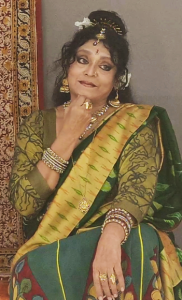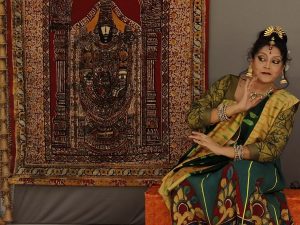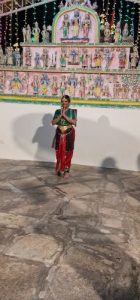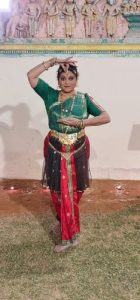Swapnasundari: A Life in Dance

Swapnasundari stands as a monumental figure in the realm of Indian classical dance, seamlessly blending the intricate rhythms of Kuchipudi and Bharatanatyam with profound scholarly insight. Her journey from a young enthusiast in Chennai to a globally acclaimed artist is a testament to her dedication, research, and passion for the arts. In this comprehensive interview, I delve into her early influences, illustrious career, contributions to dance literature, and her vision for the future.
Your journey into dance began at a tender age. Could you share the influences that shaped your early years?
I was born in Chennai into a family where music and arts were deeply revered. My grandmother, Sunder Amma, was a trained Carnatic singer, and my mother, Sarla Devi, was an artist herself. From the age of three, vocal music was a daily practice in our home, especially for women. By five, I began my dance training, and by nine, we moved to Vishakhapatnam, where I trained under Guru Pasumarthi Seetharamaiah. My first stage performance was at the age of 15, marking the beginning of my professional journey.
You trained Kuchipudi and Bharatanatyam. How did this dual focus influence your artistic expression?
I consider myself fortunate to have trained under stalwarts like Pasumarthi Seetharamaiah and Vempati Chinna Satyam for Kuchipudi, and K.N. Dakshinamurthy, Adyar K. Lakshmanan, and B. Kalyanasundaram for Bharatanatyam. This diverse training enriched my understanding of both dance forms, allowing me to appreciate their nuances and integrate elements from each into my performances. The emphasis on abhinaya (expressional dance) in both styles has been central to my artistic identity.
Your scholarly work, particularly on Vilasini Natyam, has been groundbreaking. Can you elaborate on this endeavor?
Vilasini Natyam is an ancient dance form practiced by temple dancers in Andhra Pradesh. Through extensive research, I collaborated with Dr. Arudra to reconstruct and document this nearly lost tradition. Our book, Vilasini Natyam: Bharatam of Telugu Temple and Court Dancers, delves into its origins, decline, and revival, featuring over 200 photographs. This work aims to preserve and promote this rich heritage for future generations.
Your accolades, including the Padma Bhushan, Sangeet Natak Akademi Award, and Sahitya Kala Parishad Award, are a testament to your contributions. How do you perceive these honors?
While I am deeply honored by these recognitions, I view them as affirmations of the collective efforts of my gurus, fellow artists, and my family. They inspire me to continue my work with greater dedication and to contribute meaningfully to the world of classical dance.
Your performances have graced stages worldwide. How do international audiences perceive Indian classical dance?
International audiences are increasingly appreciative of the depth and beauty of Indian classical dance. While the nuances may differ, the universal language of expression and storytelling resonates with them. I have had the privilege of performing at esteemed venues and festivals, including the Surajkund International Crafts Mela, where I showcased both solo and group performances.
As the Founder-Director of the Kuchipudi Dance Centre in Delhi, what vision do you have for the institution?
The Kuchipudi Dance Centre serves as a platform for nurturing talent, fostering dialogue among artists and scholars, and promoting the rich traditions of Kuchipudi. We aim to provide a space where classical dance is not only taught but also celebrated and preserved
Looking ahead, what are your aspirations in the realm of classical dance?
I am committed to furthering my research on traditional dance forms and exploring innovative ways to present them. Collaborations with younger artists and scholars are essential to keep the art form dynamic and relevant. Additionally, I aspire to continue performing, teaching, and writing, ensuring that the legacy of Indian classical dance endures and thrives.
Swapnasundari’s journey is a harmonious blend of tradition, innovation, and dedication. Her contributions have not only enriched the world of Indian classical dance but have also paved the way for future generations to explore and appreciate its depths. As she continues to inspire and educate, her legacy remains a beacon for all who seek to understand the soul of Indian classical arts.
Sandip Soparrkar holds a doctorate in world mythology folklore from Pacific University USA, an honorary doctorate in performing arts from the National American University, He is a World Book Record holder, a well-known Ballroom dancer and a Bollywood choreographer who has been honored with three National Excellence awards, one National Achievement Award and Dada Saheb Phalke award by the Government of India. He can be contacted on sandipsoparrkar06@gmail.com







